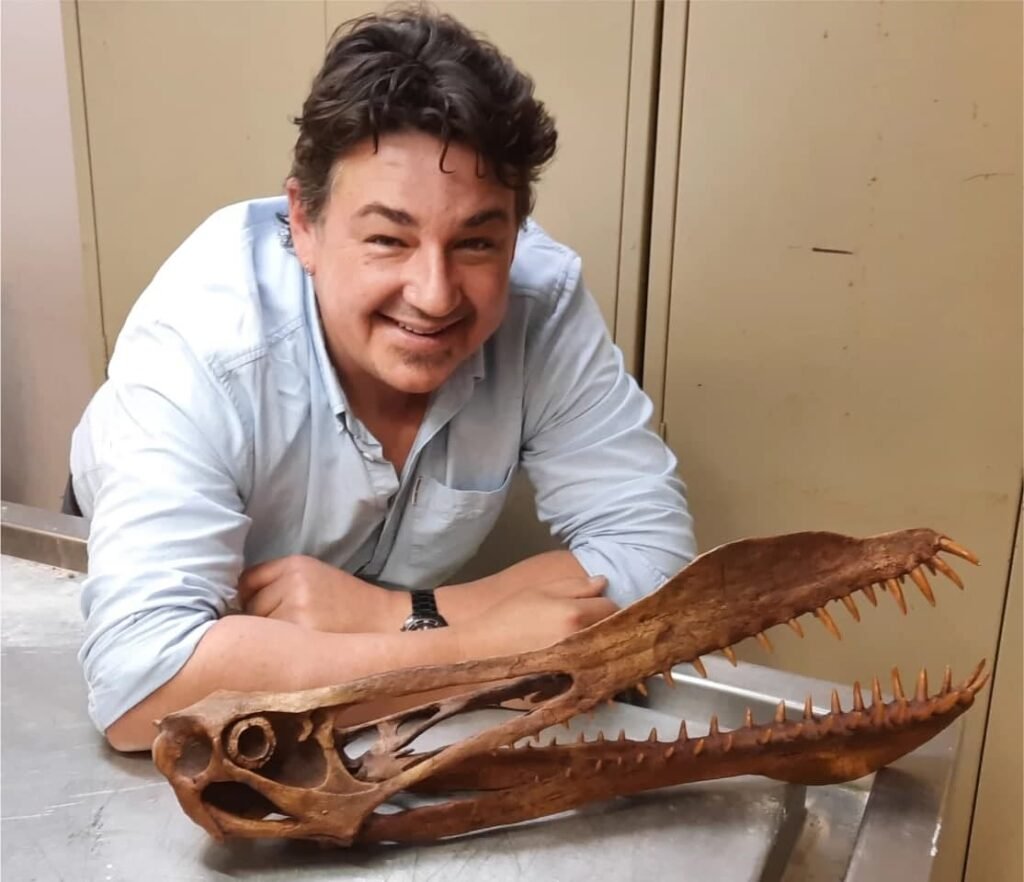Recently in Australia paleontologists discovered the largest flying reptile with an estimated wingspan of 7m (23 ft) and a jaw with spiky teeth. It would have flown over the skies of northeast Australia around 110 million years ago. The encounter of the largest species of pterosaur would help in understanding its diversity in Australia.
“It’s the closest thing we have to a real-life dragon,” said paleontologist Tim Richards of the University of Queensland in Australia. “This thing would have been quite savage. It would have cast a great shadow over some quivering little dinosaur that wouldn’t have heard it until it was too late.”
Paleontologists named it Thapunngaka Shawi which means ‘Shaws spear mouth’ where the Shawi in the name of fossil hunter Len Shaw who discovered it first and the Thapunngaka means spear mouth from in the language of Wanamara Nation (one of Australia’s first Nations peoples).
It’s the largest species of its type found on the continent. Although flying reptile’s sizes range from a Cat to a Cessna and they were the first vertebrates to evolve powered flight. The bones of pterosaurs are very delicate so they do not fossilize like other large animals, so there are only 20 specimens found in Australia.

And the Thapunngaka Shawi is one of the largest among them with a 7m (23 feet) wingspan, 40 sharp teeth, and its skull alone is more than 1m (3.3 feet) long. The neck of these species was longer than the giraffe and would have helped their heavy heads to support during their flight. Some researchers say they would be able to fly from the moment they fetch from the egg.
The description of the size from researchers means that pterosaurs are fearsome beasts. They would have grabbed little dinosaurs even before they heard them. They would have flown over the Eromanga sea and catching fish with the help of their powerful jaws.
Thapunngaka Shawi falling into the category of anhanguerian pterosaurs according to the bony crest present on the bottom lower jaw whereas in anhanguerian upper jaw is supported by such crest. The crest plays a crucial role in flying. If this is true then it would be the third anhanguerian pterosaurs worldwide from Australia Queensland. It also tells that there would have local diversification of pterosaur species around the Eromanga sea.
Overall this discovery will help to understand the diversification of pterosaurs. The fossil is now for display in the Kronosaurus Korner Museum in Richmond, Queensland. The researchers have published this research in the journal of Vertebrate of Paleontology and the researcher’s team has also made a video describing their discovery you can see it below:
I hope you like this information and stay tuned with us to get more information like this!
